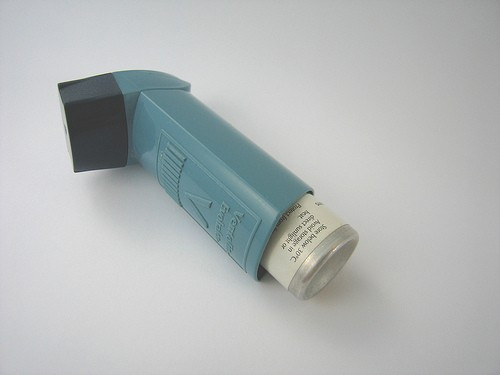Wrongly diagnosed? A third of adults with asthma do not actually suffer from it
Diagnosing asthma can be difficult because it is such a complex and variable condition.

Around a third of adults recently diagnosed with asthma may not actually suffer from the condition, a new research has found. Many patients included in the study were able to stop their asthma medication and stay off it safely for a full year.
Asthma is a common lung condition that can cause difficulties to breath. Its prevalence in the UK is relatively high – around 5.4 million people are currently receiving treatment for the condition. It is caused by inflammation and swelling of the breathing tubes that bring the air to the lungs and out.
Asthma is often a long-term condition, especially if it first develops into adulthood. Wheezing, breathlessness and having a tight chest are common features of asthma, but symptoms can vary greatly from one person to the next, and from one day to the next. This means that the condition can be difficult to diagnose.
Dr Andy Whittamore, GP and clinical lead for Asthma UK, told IBTimes UK: "In the UK, we follow the BTS/SIGN guidelines on the management of asthma – a GP can put someone on asthma medication based on their symptoms, medical history and risk factors. The patient will then be seen to assess if the symptoms are improving.
"Breathing tests can then be conducted and can help clarify a diagnosis. However, one negative test does not rule out asthma. It is also important to note that the condition has complex causes, that it is variable and can change over time – if you are tested on a 'good' day, you may not be diagnosed with asthma. All of these factors make it difficult to diagnose asthma".
In the study published in the Journal of the American Medical Association, researchers have addressed this issue of asthma diagnosis, showing that a third of adults recently diagnosed with asthma may not actually be suffering from it. They suggest that misdiagnosis of adults might be common.
33% with no asthma
The team, led by Dr. Shawn Aaron from the Ottawa Hospital randomly selected 613 patients from ten Canadian cities. All had been diagnosed with asthma in the last five years. After running a series of breathing tests and inviting the participants to a consultation with a lung specialist, asthma was eventually ruled out in 33% of the patients.
For 513 patients, medical records were available, and the researchers were able to look at the steps which had led to the diagnosis. They discovered that in one case out of two, breathing tests like airflow tests or spirometry had not been carried out. Many patients were only diagnosed based on their symptoms and doctors' observations.

In the wake of this study, some people were found not to have asthma, but other minor conditions instead, such as allergies or heartburn. In contrast, some patients were re-diagnosed with more serious conditions such as pulmonary hypertension or heart disease.
Over 90% of the participants were then able to stop their asthma medications and remain safely off treatment for one year. This indicates that there might not only be a problem with misdiagnosis, but also a problem with over-treating.
"This is a small study with a number of limitations, but it does show that there is not one single test to diagnose asthma. Some people might be over treated and over diagnosed and it is important that clinicians continuously monitor and review patients' diagnosis and reduce treatment if people are improving. However, it should be made clear that patients should not stop their asthma medication without first speaking to their doctor," Whittamore concluded.
What are the breathing tests available to diagnose asthma?
Doctors rely on patients' symptoms and medical history to decide whether or not to treat for asthma, but breathin tests can be conducted to refine and/or confirm a diagnosis:
Spirometry involves breathing out as fast as you can through a mouthpiece attached to a machine called a spirometer. This machine measured the amount of air that is breathed out in the first second, and how much air the lungs can contain. The resulting measurements are compared with those considered 'normal' for the person's sex, age and height.
A peak flow test measures how fast people blow air out of your lungs in one breath. It involves breathing out as quickly and as hard as possible in a peak flow meter to take the appropriate measurements.
FeNO stands for fractional exhaled nitric oxide and it measures the concentration of nitric oxide in exhaled breath. Inflammation of the airways is characterised by higher-than-normal levels of nitric oxide, so it can help identify airway inflammation and formulate an asthma diagnosis.
An airway responsiveness test is used to measure how the airways react to an asthma trigger, such as allergens.
© Copyright IBTimes 2025. All rights reserved.






















